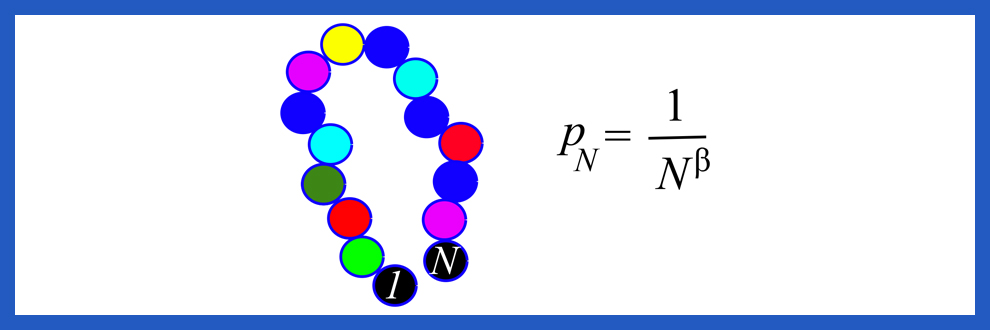
The looping in disordered polymeric models helps to understand experimental data in chromosomes and proteins
The formation of loops in proteins, in chromosomes, in DNA or RNA chains is often an important event which can trigger various biological phenomena. Making use of a simple model and of concepts lent by the theory of disordered systems, we have studied at CC&B the looping of polymers characterized by complicated, disordered interactions. In particular, we have investigated the relation between looping probability and length of the polymer, showing that it displays a scaling law with anomalous exponents, as consequence of finite-size effects amplified by the disordered interactions. The importance of these findings lies in the fact that state-of-the-art experiment can access the looping probability in biopolymers (3C experiments for chromosomes, FRET experiments for proteins and RNA), and anomalous experiments were observed but not explained satisfactorily so far.
Y. Zhan. L. Giorgetti, G. Tiana
Looping probability of random heteropolymers helps to understand the scaling properties of biopolymers
Phys. Rev. E 94, 032402 (2016)
available on journals.aps.org.
